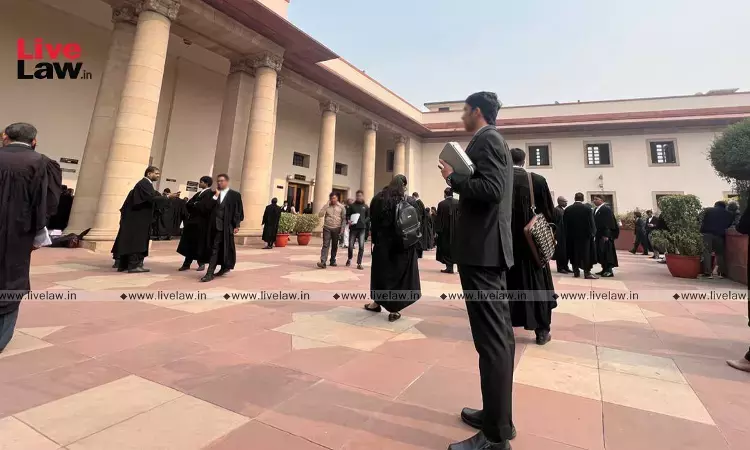
IntroductionHeritage is the identity of every respective state, and they are putting considerable efforts to preserve and protect their centuries old rich heritage. India is one of the countries possessing rich cultural and natural heritage. In this regard, the preservation of historical structures has to have an objective of safeguarding national cultural identity various policies and laws...
Introduction
Heritage is the identity of every respective state, and they are putting considerable efforts to preserve and protect their centuries old rich heritage. India is one of the countries possessing rich cultural and natural heritage. In this regard, the preservation of historical structures has to have an objective of safeguarding national cultural identity various policies and laws are framed for preservation, protection and proper management of the cultural heritage at the state and central level in India. It is pertinent to note that many of us are not aware of the legislation and legal framework States are obliged under Article 49 of the Indian Constitution to protect monuments and places and objects of national importance. It shall be the obligation of the State to protect every monument or place or object of artistic or historic interests, declared by or under law made by Parliament to be of national importance, from spoliation, disfigurement, destruction, removal, disposal or export, as the case may be. But the state is failing to abide by the provision. On the other, we as the responsible citizen of the nation unable to attach any sense of belongingness toward our cultural heritage. It is the duty of every citizen of India under Article 51A(f) of Indian Constitution to value and preserve the rich heritage of our composite culture. It is essential to be aware of the international conventions and the national and with the respective state laws significant to the security and protection and conservation of the art and the cultural heritage of a nation.
Legal Aspects
UNESCO adopted convention concerning the Protection of the World Cultural and National Heritage on November 16, 1972. It is also called World Heritage Convention. India is also party to the convention. India had its first law way back two centuries ago in form of Bengal Regulation XIX of 1810 and this was followed by legislation Madras Regulation VII of 1817. However, both the Acts were silent on the buildings under the private ownership. The Act XX of 1863, was therefore enacted to empower the Government to prevent injury to and preserve buildings remarkable for their antiquity or for their historical or architectural value.The Indian Treasure Trove Act, 1878 was promulgated to protect and preserve treasure found accidentally but had the archaeological and historical value. This Act was enacted to protect and preserve such treasures and their lawful disposal.The Cultural heritage ushered in a new era when The Ancient Monuments Preservation Act, 1904 was promulgated. This Act provided effective preservation and authority over the monument particularly those, which were under the custody of individual or private ownership. As this Act has not been repealed, it is deemed to be in force. Next Act was The Antiquities Export Control Act, 1947 and Rules thereto which provided a regulation over the export of antiquities under a licence issued by the Director General and empowering him to decide whether any article, object or thing is or is not an antiquity for the purpose of the act and his decision was final.
In 1951, The Ancient and Historical Monuments and Archaeological Sites and Remains (Declaration of National Importance) Act, 1951 was enacted. Consequently, all the ancient and historical monuments and archaeological sites and remains protected earlier under ‘The Ancient Monuments Preservation Act, 1904 were re-declared as monuments and archaeological sites of national importance under this Act. Another four hundred and fifty monuments and sites of Part ‘B’ States were also added. Some more monuments and archaeological sites were also declared as of national importance under Section 126 of the States Reorganization Act, 1956.
In order to bring the Act on par with constitutional provisions and providing better and effective preservation to the archaeological wealth of the country, The Ancient Monuments and Archaeological Sites and Remains Act 1958 was enacted on 28th August 1958. This Act provides for the preservation of ancient and historical monuments and archaeological sites and remains of national importance, for the regulation of archaeological excavations and for the protection of sculptures, carvings and other like objects. Subsequently, This Act repealed 1951 Act. In year 2010 amendment was passed to insert few new provisions, one of them was constitution of National Monument Authority. It will make recommendations to the central government for grading and classifying protected monuments and protected areas, oversee the working of the competent authorities, to suggest measures for implementation of the act etc.
The Antiquities and Art Treasures Act 1972 was enacted for effective control over the moveable cultural property consisting of antiquities and art treasures. This act repealed 1947 act.
Various states are having and proposed laws for their respective states i.e. Tamil Nadu Ancient Monuments and Archaeological Sites and Remains Act, 1966, The Hampi World Heritage Area Management Authority Act, 2002, Orissa Ancient Monuments and Preservation Act, 1956, Rajasthan Monuments, Archaeological Sites and Antiquities Act, 1961, The Madhya Pradesh Ancient Monuments and Archaeological Sites and Remains Act, 1964, Victoria Memorial Act, 1903, Salar Jung Museum Act, 1961 etc.
Central Government proposed National Commission for Heritage Sites Bill in 2009 to comply with the World Heritage Convention. This commission will recommend short term, long term policies to the state and central government, conduct research and studies, publish periodically heritage maps, make list of heritage sited for nominations, make periodical reports etc. Present bill was withdrawn in 2015 after having recommendations of various committees and stakeholders.
Judicial Intervention
As we seen above that it is duty of state to protect the heritage but when it fails to perform his duty judicial intervention becomes utmost important. Public Interest Litigation (PIL) becomes important tool in this regard. One can approach Supreme Court of India & High Court by filing writ petition under Article 32 and 226 of Indian Constitution respectively. In the Taj Mahal Trapezium Case, M C Mehta filed PIL in SC to protect Taj Mahal from surrounding industries in the year 1984 and judgement delivered in year 1996. In year 2007, in another case M C Mehta filed PIL against Taj Heritage Corridor Project approved by Government of Uttar Pradesh. Project was put on halt because of this PIL. In the case of Subhas Datta v/s. Union of India & Ors (SC, Writ Petition No 252 of 2004 decided on February 3, 2015), petitioner filed PIL in SC on the issue of protection of historical objects preserved at different places in the country particularly in various museums. He pleaded direction from SC for adequate security arrangements and for proper investigation into the incidents of theft and damage to several historical objects and also for making an inventory of available articles for future. Recently Ajay Jagga, lawyer practising in Punjab & Haryana High Court filed PIL in HC for preservation of heritage property of Chandigarh in terms of its original form and design material. HC issued notice to Chandigarh Administration. Petitioner also emphasised on preparation of inventory of antiquities, furniture artifactsetc collected by the Chandigarh Administration. Heritage Bengal filed PIL seeking a directive to the centre to try and bring back the Kohinoor diamond from the UK. SC will hear the matter alongwith other pending petition filed by the All India Human Rights and Social Justice Front. The front has also pleaded that the government should be directed to bring back other treasures of Bahadur Shah Zafar, Rani of Jhansi, Nawab Mir Ahmad Ali Banda and other rulers.
Final Remarks
As a social and cultural change intensifies, greater demands are made to conserve heritage as a brake against unwanted change and even as a means of effective change. There is great urgency to preserve the Indian cultural heritage before its complete extinction. There is a need for a comprehensive law to deal with overall aspects of the heritage in India. We propose the formation of National Heritage Resources Management Authority dealing with preservation, protection, security, research, policy level aspects of heritage in India. Also, three is dire need to create and stimulate awareness among the public for the preservation and conservation of cultural heritage. Unless people realize the value of the heritage and its benefits, no conservation scheme to be successful. Finally, it is the duty of every citizen of India to preserve and protect the legacy. Laws, rules regulation won’t work unless we cooperate in this mission.
Kalpeshkumar L Gupta is a Founder of ProBono India & Former Academic Associate at IIM Ahmedabad.
Shivali Rathore is an Academic Associate at IIM Ahmedabad & Researcher on Indian Heritage.
[The opinions expressed in this article are the personal opinions of the author. The facts and opinions appearing in the article do not reflect the views of LiveLaw and LiveLaw does not assume any responsibility or liability for the same]
This article has been made possible because of financial support from Independent and Public-Spirited Media Foundation.





